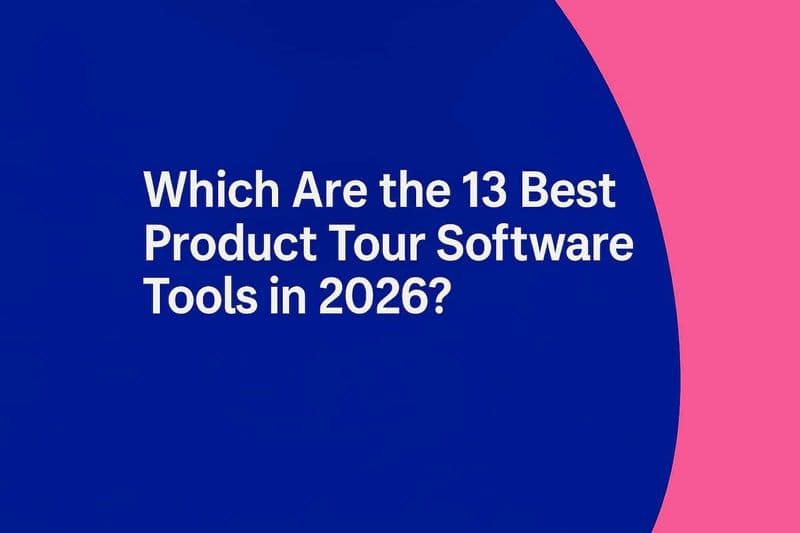
In today’s fast-paced business environment, companies often struggle to keep up with changing sales strategies while maintaining efficiency. The pressure to innovate can overwhelm teams, leading to missed opportunities and stagnant growth.
Sales teams frequently find themselves bogged down by repetitive tasks, detracting from their ability to close deals and build relationships. This inefficiency can hinder revenue goals and create frustration, affecting overall success.
In this guide, we’ll explore how Sales Enablement Automation can transform your sales approach. We’ll discuss key components and integration strategies to elevate your team’s performance and drive revenue growth. Let’s dive into the potential of sales enablement automation!
What are the Core Components of Sales Enablement Automation?
To fully leverage the power of sales enablement automation, it is essential to understand its core components. We have a detailed breakdown of these 3 components, so let’s take a closer look at it below.
Centralized Content Management
An effective sales enablement automation platform begins with centralized content management and the best sales enablement tools that serve as a single source of truth for your sales team, using the best practices and the right sales enablement software. This system allows easy access, organization, and sharing of essential resources, such as relevant content, product information, case studies, and pricing sheets, ensuring sales readiness and boosting sales revenue. With everything in one place, sales processes become quicker and more efficient.
For example, a sales representative preparing for a client meeting can swiftly access the latest product demo video or pricing sheet through a centralized system, ensuring they have the most relevant information at their fingertips.
Automated Sales Workflows
Another crucial component of sales enablement automation is the sales enablement process through automated sales workflows, a vital sales enablement tool that helps generate qualified leads and interact with potential customers for improved customer engagement. These save time for sales reps by automating repetitive tasks and allowing them to focus on the right resources and revenue-generating activities. From logging calls and emails in the CRM to triggering personalized follow-up sequences based on prospect behavior, automated workflows bring efficiency to the entire sales process.
Data-Driven Insights
Data plays a pivotal role in any successful sales strategy, and it shines in sales enablement strategies and automation. Automation tools can collect and analyze customer data from various sources, such as CRM, marketing automation platforms, and sales content management systems, utilizing sales intelligence to enhance decision-making and explore new markets at the right time. This amalgamation of data provides valuable insights to companies of all sizes and helps sales leaders identify top-performing content and messaging, monitor rep performance, and accurately forecast pipeline and revenue.
How do You Integrate Automation into Your Sales Process?
Integrating automation into your sales process begins with identifying opportunities for lead qualification, leveraging your CRM platform, and conducting thorough testing. Proper integration is essential to maximize efficiency and ensure seamless operation of your sales automation tools. Ready to explore how to implement these steps successfully? Let’s explore each aspect of integrating automation into your sales process!
Identify Automation Opportunities
The first step to integrating automation is identifying the opportunities within your current sales process where automation can significantly impact efficiency and output. Evaluate the various repetitive tasks such as data entry, lead assignment, and follow-up emails that can be automated.
For instance, automating the manual task of entering lead information into your CRM can save hours for your sales reps, thereby increasing capacity for more customer-oriented tasks.
Leverage Your CRM Platform
The Customer Relationship Management (CRM) platform serves as a central hub for all customer interactions and data, including phone calls, sales calls, and social media. To harness the power of sales automation and manage sales activity fully, it's crucial to pick a CRM that offers robust automation features or integrates seamlessly with tertiary tools. The ideal CRM platform should automate key processes such as lead assignment, task creation, and pipeline management.
For instance, setting up rules that automatically route new leads to the appropriate sales rep based on geography or industry can reduce response times and ensure that no opportunities slip through.
Implement and Test Automation
After identifying the right tools and integrations, the final step is implementing them and conducting rigorous testing. Implementation in a phased manner, focusing on one or two crucial areas at a time, allows for thorough testing and optimization of processes, ensuring a smooth rollout and minimizing disruption.
Monitoring the impact of automation on lead response times, conversion rates, and overall sales performance provides valuable data to optimize your automation strategy continuously and make data-driven decisions.
How to leverage Automation to Boost Sales Team Performance?
Automation fundamentally reshapes sales teams' functionality by allowing them to focus on high-value tasks and eliminate time-consuming manual tasks. In the following section, we'll explore how to leverage automation to elevate your sales team's potential, streamline workflows, empower reps with extensive training and tools, and showcase real-world success stories.
Streamlining Workflows and Reducing Manual Tasks
One of the greatest benefits of sales enablement automation is its ability to streamline workflows and reduce manual tasks. Automating sales prospecting and repetitive tasks like data entry, lead assignment, and follow-up emails enables your sales reps to focus on high-value tasks like building relationships and closing deals.
Empowering Sales Reps with Training and Tools
To fully leverage the power of automation for strategic growth, it's essential to equip your sales organization team with the sales training and tools they need to succeed in areas such as contract management and onboarding of new hires. This not only includes teaching them how to use automation software but also helping them understand where and how it fits into the overall sales process. Regular training sessions, detailed documentation, and ongoing support can ensure your team is comfortable and confident using these new tools.
Driving Results with Real-World Success Stories
Real-world success stories serve as strong motivation drivers for sales teams. Showcasing how automation has boosted sales teams' performance, helped them respond to leads more quickly, and enabled them to exceed quotas can inspire your team to maximize their use of these tools.
How to Measuring Sales Enablement ROI?
Tracking key metrics can help you assess the efficacy of your strategies, identify areas for improvement, and make data-driven decisions to drive superior results. Let's explore the essential metrics to gauge the return on investment (ROI) of your sales enablement initiatives.
Tracking Conversion Rates and Sales Cycle Length
Conversion rates are critical indicators of the success of your sales enablement automation tools. By observing the percentage of leads that evolve into customers at each funnel stage, you can identify bottlenecks and optimize your strategies accordingly.
Analyzing Sales Performance Data for Predictive Insights
Sales enablement automation generates a treasure trove of data that can help predict future performance. You can forecast potential outcomes and adjust your strategies proactively by analyzing trends in pivotal metrics like deal size, win rates, and revenue growth.
For instance, if you notice that deals that involve a particular product have a higher win rate, you can mold your automation tools to promote that offering to the right prospects at the perfect time.
Gathering Feedback to Refine Automated Processes
While quantitative data is paramount, qualitative feedback from your sales team and potential leads can offer valuable insights into the effectiveness of the automation tools. Regularly surveying your reps and customers can help identify pain points, collect suggestions for improvement, and ensure that your automation is truly enhancing the sales experience for all involved.
Choose SmartCue for Your Sales Enablement Automation Needs
Choose SmartCue for your sales enablement automation needs and watch your sales velocity soar! With SmartCue, you can deliver personalized demos in real-time on any virtual meeting platform, addressing your prospects' pain points and helping them reach that 'Aha!' moment to close deals faster.
Transform training and onboarding by moving away from static LMS tools; SmartCue enables contextual training for both customers and employees, allowing them to grasp your value proposition quickly. Plus, empower your partner sales channels to supercharge your go-to-market strategy and sell more effectively. Don't miss out—elevate your sales game with SmartCue today! Get started now!
Conclusion
Mastering sales enablement automation is crucial for optimizing your sales process and driving revenue growth. By focusing on core elements like centralized content management, automated workflows, and data-driven insights, you can leverage its full potential.
Integrating automation carefully and providing adequate training for your sales team leads to improved performance and streamlined workflows. While challenges may arise, consistently monitoring key metrics and gathering feedback will refine your processes over time, enhancing efficiency and data accuracy.
Don't let your competitors get ahead—start automating today to boost your sales productivity and achieve tangible business benefits!
Frequently Asked Questions
What is Sales Enablement Automation?
Sales Enablement Automation is a technology-driven strategy that leverages tools and automated processes to enhance sales team efficiency and productivity. It involves automating various sales tasks, equipping teams with the necessary resources, and providing actionable insights to close more deals in less time.
How does Sales Enablement Automation work?
Sales Enablement Automation works by integrating various sales tools into a unified system to automate tasks and provide easy access to resources. It centralizes content management, automates sales workflows, and offers data-driven insights, helping sales teams to work more efficiently and effectively.
What challenges might organizations face when adopting automation?
Organizations may face various challenges when adopting automation, including the loss of a personal touch in customer interactions, over-reliance on tools, and data quality issues. However, with proper planning and execution, such obstacles can be overcome, paving the way for successful automation integration.
How can companies overcome obstacles in implementing automation?
Overcoming obstacles in implementing automation involves strategic planning, thorough training, and ensuring data quality. Balancing automation with personalization, encouraging reps to view automation as a tool, not a crutch, and implementing stringent data governance practices can help navigate these challenges and reap the benefits of automation.
How will automation evolve in sales enablement over the next few years?
Automation will likely expand to handle more aspects of the sales process but will still retain human connection as a key component. Future automation tools are expected to offer personalized capabilities tailored to individual sales reps' workflows and elevate sales enablement to a strategic level within organizations.


